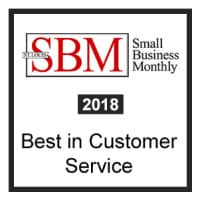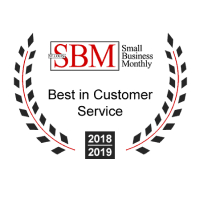 All companies want a brand that sticks. They want to create an idea that customers can latch onto and love, one that will translate into revenue and consumer loyalty. The key to this is authenticity.
All companies want a brand that sticks. They want to create an idea that customers can latch onto and love, one that will translate into revenue and consumer loyalty. The key to this is authenticity.
Being seen as a leader and getting noticed online both come when your voice and input are helpful, real, genuine and meaningful, which are all the elements of authenticity.
Successful brands are authentic and influential at the same time, and in turn shaping the opinions of people and driving action. With these ideals in mind, follow our tips to creating an authentic brand, which will come in handy for both a brand new company and one that has been around for a while.
1. It’s All About Communication
Communication is so important. You are trying to gain customers, let them know about your brand, and be genuine. How do you achieve this? Excellent communication. You know that relationships are all about communication and listening; well, your brand and your customers also have a relationship. If you are going to have a successful relationship with your customers you must listen to them, and respond. If your brand is on social media, this is the perfect place to open up discussion and create lasting and loyal customer relationships. Watch for new comments from followers, get involved and respond naturally.
2. Establish Your Voice
You have to establish your identify online, and to do so, you establish your voice. Align your voice with your values, morals and mission of the company. Another important pointer is to regularly review the social media profiles of a few of your competitors, ones that resemble you the most, and learn from their mistakes and successes. Examine the voice they use and how their customers respond to it. Strive to write for your brand in the same way that you would write on your own social media, or talk to your friends. Speak casually and professionally, so people know there is a real person behind the posts. This will humanize your brand and in turn show your customers your authenticity.
3. Honesty is the Best Policy
People are drawn to honestly. Why do you think our closest friends are the ones that will call us on our crap, or always apologize when they are wrong? We trust these people, because they are sincere.
A trusted brand is the same way. For example, when Honda messed up its airbag system and recalled 5 million cars, polls showed that the public’s perception of the automaker’s product quality was hardly compromised. This is because Honda built up years of trust with their customers and the public, honestly admitted their mistake, and fixed the problem as best they could
If your product has a recall, or failed in any way, be honest, especially on social media. The old saying, ‘honesty is the best policy’, will always be true.
4. Act in the Present Moment
As technology advances, social media and marketing tools get more convenient for busy schedules. While some of these tools are great in the right situations, they aren’t something to use for every single social media post. Sometimes these services have a downside, as they put you on a blind routine. Followers may eventually notice that you post the same day every week, and your posts seem robotic. Make sure to at least once in a while post in real time. React to a news article, post an image of your afternoon coffee or make known to customers in some way that you are there and you are listening. Social media is social, so be real, act human, and live in the present moment.
5. Tell Your Story
You may love your logo, and have nailed the font and colors, but it isn’t your story. Social media is a place to get that story out. The story about the people behind the brand, its mission, and the people they serve.
Take the opportunity on social media to tell stories about the people who work for your company, their families, and your purpose. Weaving these stories together, whether it’s on your website or in a video, tells the stories of who you are, and that’s what the customers care about. If your story is meaningful, then customers will care about your mission. If they care, not only will they purchase products and services from you, but they will also become vocal advocates and influencers for your brand.
With five these tips, your customers should find you more authentic in nature, because you will be more authentic. If you see your customers engaging more and more, that is evidence your authenticity and sincerity are working. At the end of the day, just be yourself.
 You put everything into building and maintaining your brand image. We know you are attached to your work and your company. But, when it comes to dealing with your customers, it’s not about you anymore; it’s ALL about them. All emotions have to be left for happy hour, and kept offline.
You put everything into building and maintaining your brand image. We know you are attached to your work and your company. But, when it comes to dealing with your customers, it’s not about you anymore; it’s ALL about them. All emotions have to be left for happy hour, and kept offline.
Social media platforms have become a place that customers go for complaints and customer service. Your brand will get negative feedback on social media. Did you know that 33 percent of users prefer to contact brands using social media rather than the telephone or email?
As more and more customers head to your social accounts for support, it’s important to remember that they are social platforms. If your customer leaves you a negative comment, what matters most is your ability to connect with them, stay positive, and address their problem.
1.Don’t Delete Negativity
Always remember: do not delete! If you posted something controversial and are getting negative comments, do not delete the posts or the comments. Deleting does not make your customers feel like you are listening to them and will only make the problem worse. If the customer cared enough to leave the comment, they will leave another once you delete theirs.
The only exception to the rule is if a customer leaves an inappropriate comment (i.e. pornographic, spam, threatening, racist, etc.) Use your best judgment in these cases.
2. Respond Quickly
Consumers usually post negatively because they want a problem fixed. They probably tied to call and were put on hold, or knew no one would respond to them over the phone. They went to your social page for answers and support from others. Try to get to their comment before others do. Consumers expect their problem to be addressed quickly. Try to respond within the hour, or at least before 48 hours have passed. At the same time, make sure you don’t just respond with the first thing you think of; write out a draft, read out loud, and ask yourself, “If I were the complaining customer, would I feel better after reading this response?”
3. If Necessary, Apologize
If you should admit fault, do it right away. This shows you company cares about your customers and have ethics. But, if you are not at fault, it is important to find the middle ground when apologizing so your company can convey empathy while also standing by its standards.
4. Handle it Offline
If you need to move the conversation online, do so. If it is a sensitive issue, the customer may want the special attention of a one –on- one conversation. This can be tricky , because if you attempt to move the conversation offline the customer may lash out that you do not want to address the problem in front of others. The goal of this is to show concern and extend contact information to the worried customer, so it will help the customer swiftly resolve their problem. Do not tell them to move the conversation somewhere else, just suggest and supply the means to do so.
5. Beware of the trolls!
Let’s face it, internet trolls are the worst! They cannot be consoled nor reasoned with. To determine if you’re dealing with a troll or a customer, ask yourself the following questions:
If every answer is an obvious no, you’re most likely dealing with a troll. There are various ways to deal with trolls, from using humor to respond to them, , to ignoring them. If the comment is unnecessarily destructive, derogatory or offensive, this is the time you can delete and report the user. There is also the option of blocking them from your page.
If you need a laugh and to know what NOT to do, check out this parody page ‘customer service’. This is an account crated by comedians to troll big brand’s pages and respond to customer issues. While parody accounts like these are humorous, be wary of them on your brand’s pages!
Social media involves a mix of marketing and public relations for your brand. You’ll need to be able to wear multiple hats to manage your brand if you choose to promote online. By using these tips, you can sufficiently handle negative commentary and show your customers amazing customer service.
 It is the fear that keeps small business owners up at night. It is the nagging pit in their stomach. Despite all of their efforts, their excellent service and their in demand products aren’t selling as they hoped. Where are your customers? Why aren’t they finding you? The answer can be as simple as three little letters, SEO.
It is the fear that keeps small business owners up at night. It is the nagging pit in their stomach. Despite all of their efforts, their excellent service and their in demand products aren’t selling as they hoped. Where are your customers? Why aren’t they finding you? The answer can be as simple as three little letters, SEO.
As it becomes more challenging each day to be noticed online, St. Louis SEO services are becoming more appealing to small businesses. But finding the right SEO company is not as simple as a quick Google search. The difference between a good SEO company and a shady one can be summed up in a few questions.
1.How long have they been in business? What is their philosophy for working with their clients?
Fly-by-night companies are an unfortunate reality in the field of SEO. Many of these use spammy tricks to boost SEO for a little bit, but ultimately trash the overall ranking of a site before packing up and moving on. These companies are in it for a quick profit and not much more.
In contrast, the more reputable SEO companies take a well-rounded approach to boosting their client’s rankings, and it should show in their overall philosophy. These companies are more focused on relationship building and often will have a list of case studies and customer testimonials to showcase their abilities.
2. What metrics do they focus on?
It is easy to get lost in the jargon when talking about SEO. Words like rankings, keywords and backlinks get bandied about regularly. While the vocabulary is important, a good SEO company should be able to translate this jargon into plain English for their customers.
They will ask questions and discuss options and opportunities as they determine the best practices for your company. Using organic, pay-per-click management and social media marketing options a legit SEO company can create a plan that will help your company meet its goals. Do you want to boost awareness or drive people in the door? If what you want are conversions the right firm will focus primarily on those for their clients. While rankings and traffic are important, at the end of the day, sales and action matter the most.
3. Do they promise lighting fast results?
If an agency promises you 100% perfect results, right away….be cautions. An honest agency will be able to give you results within 4-6 months and substantial results within 6-12. In order to get the conversions you want, results take a bit of time. Any agency that says it will only take a few weeks will probably rely on shady practices to get those results with link buying and spam. This will give you a quick boost but overall can lead to big penalties with Google and other search engines which can get you blacklisted and tank your rankings in the long term.
4.What is their content and link building philosophy?
The answer should always emphasize quality over quantity. Good links come from high-quality sources and a certain number cannot be predicted. So, if a firm promises a certain high number, they deserve some more questions. “Black-hat” SEO is never the answer, and this includes link buying in any way.
Search engine optimization, really good SEO, relies on relationship building with your customers, with your stakeholders and with the World Wide Web.
5. What is their keyword strategy?
More than ever before, searches use “natural language”, long-tail keywords and full sentences, rather than just a keyword or two. If the firm suggests many short keywords and keyword plugging as their strategy to get you noticed, be wary. Keyword strategy has changed to focus on more on long-tail results rather than just “golden keywords” that many clients think will bring them high traffic.
6. What is their reporting process?
If an SEO company starts to get evasive at this question, run away quickly! Statistics are easy to come by in the digital world, but it is the “how” and the “why” that deliver the most ROI. Sure your traffic may be up, but can your SEO company tell you where it is coming from or why? The ideal firm promises monthly reports that can give you a snapshot of your overall digital health and offer well-reasoned plans for growth. When you talk to references and check case studies this is something to look for.
7.Are they integrated?
You will always benefit from a firm that does more than just SEO. Other digital-marketing services such as web development, social media, content marketing, or conversion-rate optimization will help your SEO goals overall. Working with a company that is too specialized can effectively act as blinders for your business. A social media strategy that doesn’t integrate with your website or a development plan that doesn’t build in room for SEO is like trying to steer a boat while everyone paddles in different directions. Try to find a firm that takes a holistic approach to your digital marketing goals and get the most bang for your buck.
Don’t be afraid to ask these questions when looking for an SEO company. In fact, ask any question that comes to mind. A quality SEO company should be able to answer with clarity and offer examples to back up their points. High quality SEO is an investment and not just monetarily. SEO companies act as ambassadors for your brand and influence your reputation online. So take the time to find one that will help your business grow and will act as an extension of your company.
Of course, all of these aspects fall under the Seafoam philosophy. At Seafoam Media we take pride in both the science and the creativity that we bring to the table, crafting a plan that will not only drive business but also enhance your online reputation. We take a holistic approach to generating quality traffic for your company. Curious about our approach? Call us today! We are happy to explain exactly why we are different.
 Maybe you heard the latest news, or maybe you logged onto your computer and something seemed a little, well different. Or, if you are like us, you are a proud SEO nerd that tracks Google’s changes like a kid counts down to Santa Claus. Either way, you may know that Google has majorly changed its logo for the first time since the last millennium. But, do you know what this change means and why this is such a big deal? Since we are proud SEO nerds, let us tell you.
Maybe you heard the latest news, or maybe you logged onto your computer and something seemed a little, well different. Or, if you are like us, you are a proud SEO nerd that tracks Google’s changes like a kid counts down to Santa Claus. Either way, you may know that Google has majorly changed its logo for the first time since the last millennium. But, do you know what this change means and why this is such a big deal? Since we are proud SEO nerds, let us tell you.
So, a couple of days ago Google revamped its iconic logo; simplifying the design and ditching the serifs on the text. For those of you unfamiliar with font design, serifs are a big deal. Most of the text you read in the newspaper (those primitive news devices that were once delivered to your home, before we all got tablets) has a serif. It is a tiny decorative line attached to the edges of the letters. They help your eyes with readability when there is a lot of text. Serifs are particularly helpful for books, newspapers or other really wordy items. They are not ideal for reading on a screen however, especially not a smaller screen.
That is the first big indicator that this new logo is more than just a little branding tweak. Google is up to big things, and they want their logo to reflect their goals. Think we’re reading too much into the news? Let’s think about the serif and the new san-serif font that Google used for their logo. As we said, serifs are not great for smaller screens. They are not particularly scalable because of this, so Google’s old logo didn’t really shrink well. The G is indistinguishable from a C or the L gets confused for an i. That is a big problem as technologies move from tablets, to smart phones, to smart watches. Serifs also eat up bandwidth, not a ton, mind you. But in areas with poor connections or low-bandwidth the old Google logo was slightly modified, subtly altering the brand. In changing to a san-serif logo, Google is able to present a consistent and scalable logo that looks the same on any screen with any bandwidth.
The new logo is multifunctional as well. On smaller screens, like mobile phones, the new logo is replaced with a four color G. Those using voice search will notice that the logo morphs into four colored dots which act as an equalizer as the user speaks.
In a nutshell this tells us that the future for Google, and technology in general is in mobile. All of these changes are meant to enhance the brand and keep it consistent as tech becomes smaller, more ubiquitous and more portable. This indicates that Google is focused on moving into emerging markets where technology and bandwidth has room for growth. It shows that Google has a keen eye on wearables and will continue to design to dominate as new technologies roll out.
Still not convinced, you can take it straight from Google in the video at the bottom. Or, you can look at Google’s newest announcement in which the search giant indicates it will penalize pop-up advertisers on it mobile search engine. Google views this as a major frustration for those searching on mobile devices and is a huge detriment to the overall user experience. Coupled with the latest algorithm update, which will rank mobile optimizes sites higher than their web-only counterparts, it signals that Google’s priorities are becoming very mobile friendly.
The takeaway for the average business owner is clear; if your site isn’t mobile friendly than you are doing your brand a huge disservice. If your brand isn’t prepared to meet your customers on any size screen, you might just get left behind.























